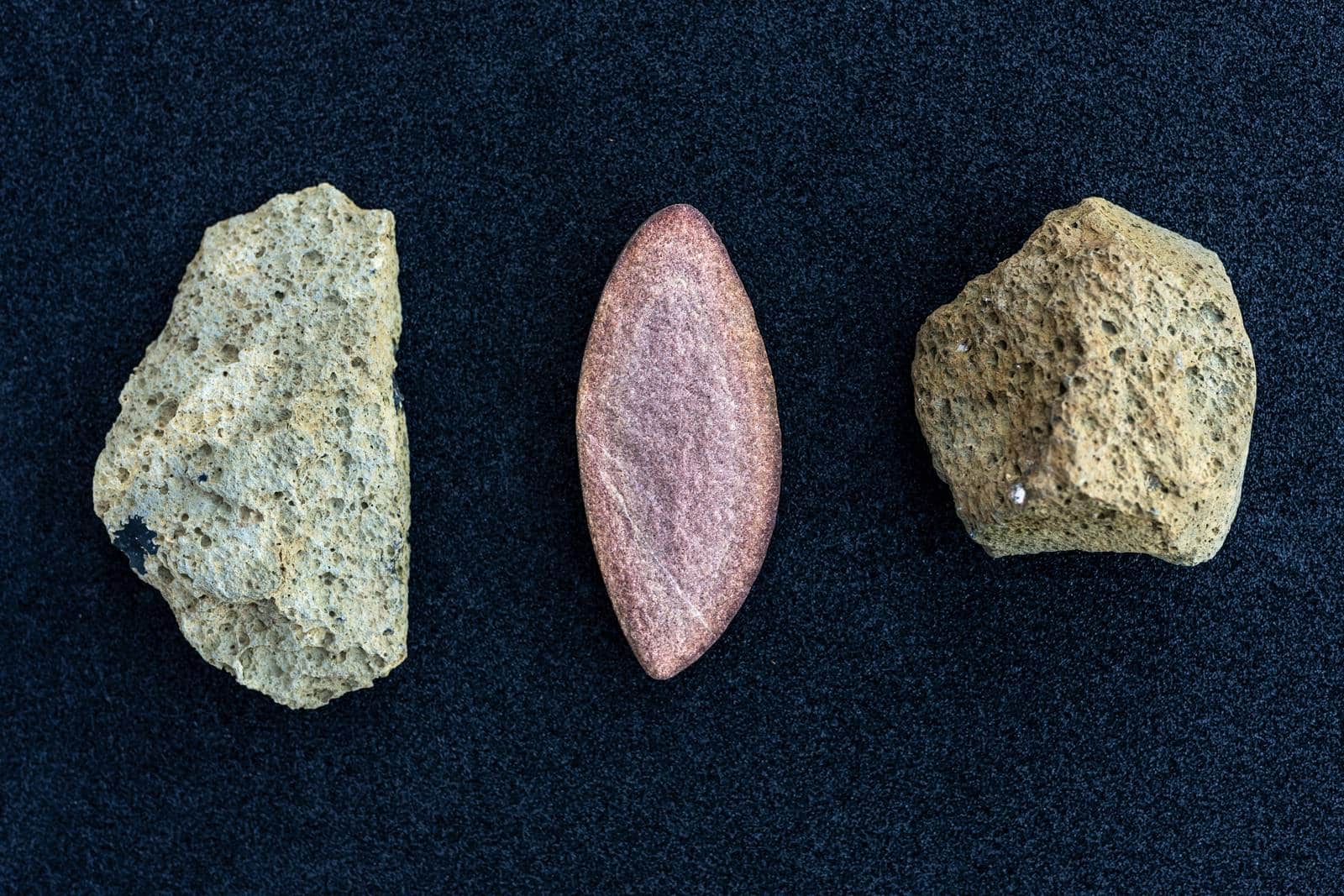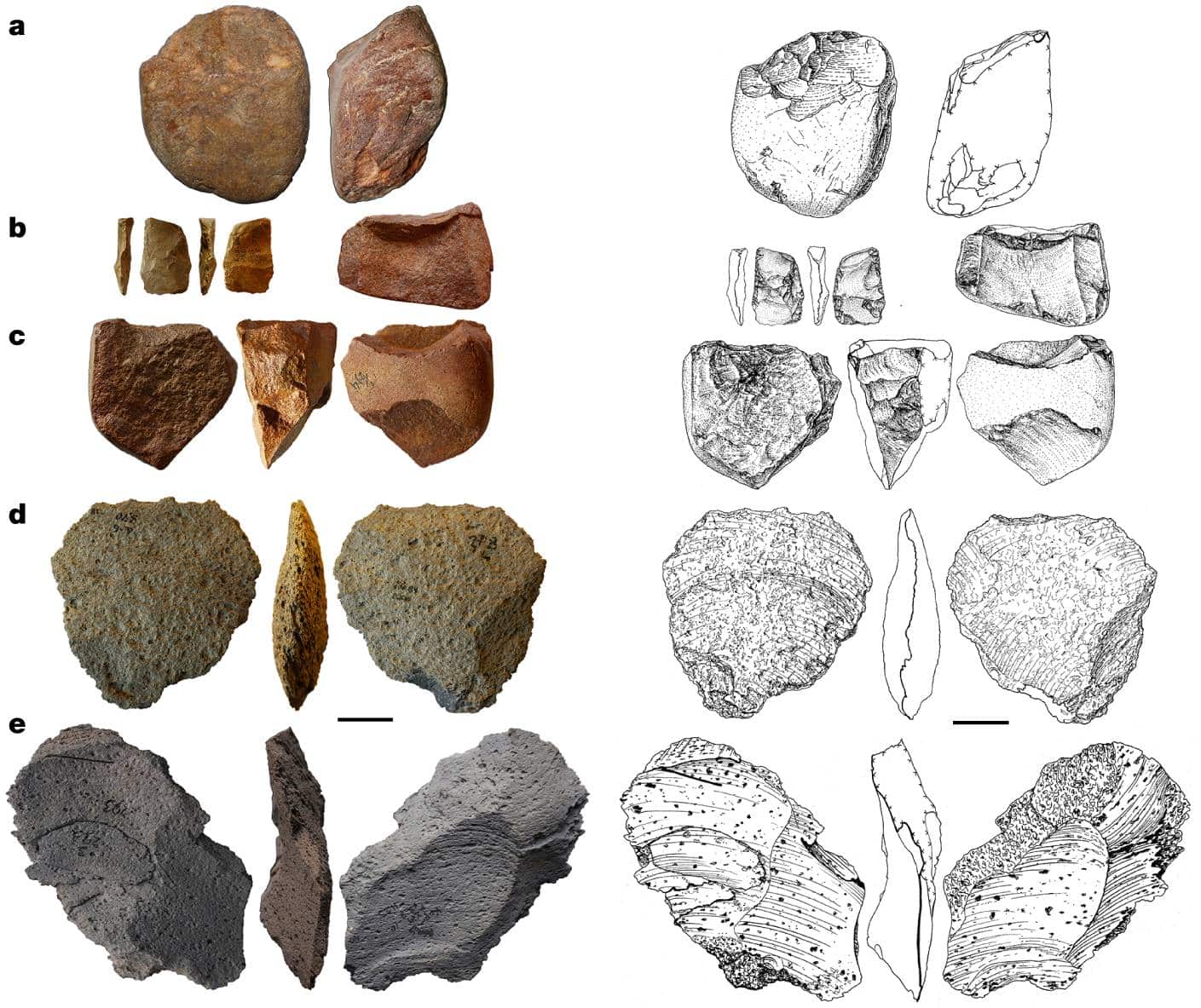
The oldest traces of human presence in Europe were discovered in Ukraine
⇧ [VIDÉO] You may also like this partner content
While human footprints dating back 100,000 years were found in 2022 in Larache, south of Tangier (Morocco), recent discoveries could rewrite the history of human migration. A team of archaeologists has discovered stone tools buried in the deposits of the Korolevu quarry in Ukraine. These pieces of rock, which seem harmless at first glance, were used by man's direct ancestors: Homo erectus. They represent the oldest evidence of the presence of humans on the European continent. This discovery therefore calls into question many scientific estimates, in particular the fact that early human ancestors could not survive in latitudes with cold climates.
The Atapuerca Caves in Spain and the Valonette Caves in France are so far considered the first places inhabited by human ancestors in Europe. However, recent discoveries are poised to change our view of history. In western Ukraine, at the archaeological site of Korolevu, a team of researchers led by the Institute of Nuclear Physics of the Czech Academy of Sciences discovered 1.4 million-year-old stone tools. Details were published in the magazine nature.
Having contributed to the dating of the Korolevu site, Professor Andy Herries, an archaeologist from La Trobe University and Director of the Australian Archaeological Magnetism Laboratory, believes this discovery is of great importance. In fact, it suggests thatHomo erectus It was able to adapt to cold environments long before estimated. ”
Previously, it was thought that our early ancestors could not survive in cold northern latitudes without the use of fire or complex stone tools. However, we have evidence that Homo erectus lived farther north than previously documented in this early period “, Herries explains in a I reported.
In the same vein, the professor believes that this will allow us to better understand the first dispersal of the human ancestor as well as the way in which the first representatives of man gradually settled in Europe.
Understanding Human Migration: Lifting the Veil
The history of human evolution to date is unclear and has many gaps. However, in recent years, elements have gradually begun to piece together the missing pieces of the puzzle. First, there are footprints dating back about 100 thousand years that were discovered in Larache (Morocco). Next, we can cite the discovery of tools at the Korolevu site, which indicates thisHomo sapiens They may have migrated through Asia 1.8 million years ago before arriving in Europe 1.4 million years ago. According to Herries, The Dispersion of Humanity is far from being a linear narrative with a single starting point, a single cradle located in one part of the world. Rather, he believes that the story is much more complex than that.
1.4 million years: how can this precise dating be achieved?
This is the question that enthusiasts and other researchers are asking, taking into account the characteristics of the Korolevu site. In fact, it extends to a depth of 14 meters and consists of accumulated layers from which thousands of objects have been excavated. The latter so far dates back several thousand years, and according to research, the site has witnessed at least seven periods of human occupation. The usual method of radiocarbon dating of organic material (found nearby) has been notably ruled out, since there are no actual biological remains at the site. Thus, in the decades following the discovery of these tools, it has been impossible to even accurately estimate their ages. until today.

A selection of stone tools from the Korolevu quarry.
© Garba et al. Nature 2024
Revolutionary dating technology
This is what the team led by archaeologist Roman Garba from the Czech Academy of Sciences was able to exploit. ” To answer the questions posed by archeology and anthropology, it is necessary to use the methods of nuclear physics and geophysics “, explains Garba. This technique is based on the use of cosmic rays and the measurement of the disintegration of certain atomic nuclei in materials exposed to the surface. Thus, it is now possible to precisely determine the time that has passed since the object was last viewed.
See also

” Specifically, we measured concentrations of the cosmological nuclides beryllium-10 and aluminum-26, which have different half-lives.. The ratio between the two varies depending on how long the blocks are buried under the soil surface. This allows us to calculate their ages since their burial. », Garba continues. This is the first time that this method has been used in archaeological dating.
This research, conducted by Garba's team, represents another step towards understanding the first human migrations in Europe. ” It remains to be seen whether this was part of a larger, as yet undiscovered, occupation of Europe at this time. says Andy Herries.
source : nature

“Organizer. Social media geek. General communicator. Bacon scholar. Proud pop culture trailblazer.”
